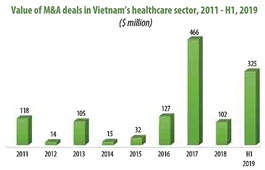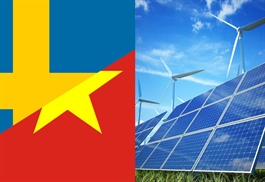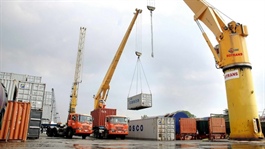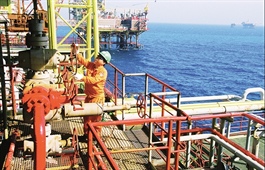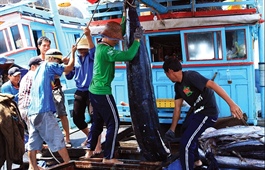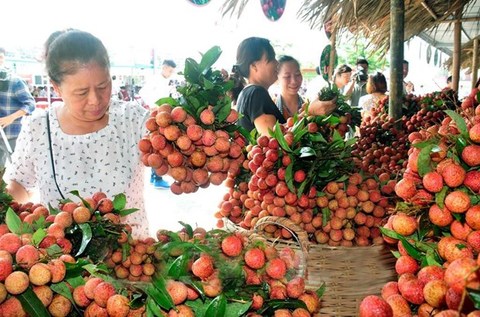Origin rules may bar textile makers from EVFTA boons
Origin rules may bar textile makers from EVFTA boons
Many of Vietnam’s textile and garment businesses could be deterred from the benefits of the free trade agreement between the European Union and Vietnam by falling short of the requisite rules of origin.

Origin rules may bar textile makers from EVFTA boons, illustration photo
|
Phan Van Viet, chairman of Viet Thang Jean Co., Ltd. (VitaJean), said that the EU market holds 30 per cent of its export revenue. Thus, the implementation of the EU-Vietnam Free Trade Agreement (EVFTA) will theoretically be a boon to expanding its exports. However, the company is facing difficulties to meet rules of origin (ROO) under the agreement.
According to the Ministry of Industry and Trade (MoIT), to benefit from tax slashes in the EVFTA, Vietnamese textiles and garments must strictly obey ROO, meaning product materials must be sourced from Vietnam or the EU, and the cutting and sewing processes must take place in either, too. The EVFTA also allows materials sourced from South Korea, with which the EU and Vietnam have an FTA, to be eligible for tax incentives.
Still, VitaJean was not qualified for preferential tariffs as it mainly sources materials from Taiwan and mainland China. Viet said that if the company sourced materials from elsewhere, it would face another challenge in quality and design. For example, Thai materials generally do not have versatile design and quality like those from China. It is also difficult to import materials from Thailand than China due to higher logistics costs and slower delivery times.
On the same note, a representative of Garmex Saigon Corporation said that the company is going to be in a tough position once the EVFTA comes into force as it will not meet the EVFTA’s fabric-forward rules because it mainly relies on Chinese materials. At present, the EU market accounts for 40 per cent of the company’s export revenue.
Pham Xuan Hong, chairman of the Ho Chi Minh City Association of Garments, Textiles, Embroidery and Knitting, told VIR that the EVFTA’s fabric-forward regulations are simpler than the “yarn forward” ROO of the Comprehensive and Progressive Agreement for Trans-Pacific Partnership. However, Vietnam’s textile and garment industry remains concerned given that local fabric production is limited with less competitive pricing than China. Businesses are increasingly importing materials from South Korea to meet ROO but price competition remains tough.
Hong added that some local businesses have started to research products in the EU market that can be made from Vietnamese fabric such as T-shirt fabric. However, to address the root of the problem, the government should give more incentives to them to develop supporting industries and increase localisation rates for textile and garment products.
In the time to come, more companies are expected to ramp up investment in the field to avail themselves of opportunities from the EVFTA. All of these factors will help Vietnam’s textile and garment industry to improve capacity and output for EU export.
Research by VNDirect Securities Corporation showed that 42.5 per cent of import tariff lines on Vietnamese textile and garment products will be removed as soon as the EVFTA comes into effect, while the remainder will be gradually reduced to zero within three to seven years from a starting rate of 12 per cent. The EU is the second-largest export market of Vietnamese textile and garments, with 2019 export value reaching $4.33 billion (13.4 per cent of the total textile and garments export turnover). Currently, Vietnam’s textile exports to the EU are subject to tariffs of 7-17 per cent (an average of 9.6 per cent) under the generalised scheme of preferences. It is believed that exporters of textile materials such as fibre, yarn, and wool to the EU (currently accounting for a small portion of Vietnam’s textile and garment export value to the EU) will benefit immediately from the EVFTA. For exporters of final textile products to the EU, the benefits of the deal will increase with tax reductions from the second year.
Tim Evans, HSBC CEO, said the textile and footwear industries are expected to benefit the most from the deal as these have traditionally had the highest tariff rates across all sectors. In 2019, Vietnam exported over $9 billion worth of textiles, garments and footwear to the EU at a weighted average tariff of 9 per cent.
“As it stands, the products of many Vietnamese textile and garment manufacturers do not have enough locally-produced inputs to satisfy the EU’s demanding rules of origin,” Evans said. “The government and businesses will need to work in harmony to expand our domestic textile and garment industry to include the production of input materials instead of importing them from other countries if we are to take full advantage of the agreement.”
Echoing the view, Tran Thanh Hai, deputy director of the MoIT’s Import and Export Department, said the heavy reliance on imported materials and fabric is a major challenge for the industry. To solve this issue, Vietnam needs to attract modern and eco-friendly dyeing and weaving projects.
“Ministries and authorities should develop local supporting industries to meet fabric-forward rules as well as create high-added value for Vietnamese products in the EU,” Hai added.



